Right now the government is asking the public for more ideas to put in its Emission Reduction Plan (ERP). The ERP will set out the steps Aotearoa will take to reduce emissions and contribute to limiting climate breakdown’s worst impacts.
For Oxfam, getting this right is key to Aotearoa New Zealand playing our part to protect the communities across the world that are the most vulnerable to climate change and who are already experiencing poverty because of global heating.
Recently the government released its draft ERP, containing three emissions budgets, which outline how much the policy actions in the ERP would reduce emissions by over the next decade.
What the government is proposing in this draft is not enough.
The proposed emissions budgets would reduce emissions by just 8 per cent below current levels by 2030 – far, far below what is needed to keep global heating within 1.5 degrees. To add insult to injury, the policy actions outlined in the ERP aren’t even enough to meet these weak budgets.
This plan is the way Aotearoa New Zealand puts into action its 2030 international target that other countries will hold us to account for. Because the government is proposing to do so little in the ERP, to meet this international target we will have to purchase offshore carbon credits, costing taxpayers between $7.5 billion to $13.2 billion – essentially just paying other countries to do our work for us.
Here are six solutions ready-made for our ERP that will make sure Aotearoa New Zealand is doing all it can to cut our climate pollution, in a just and equitable way.
If you don’t have time to read the full details and are ready to make your submission, copy and paste the following list when answering question 2.
I would like to see the following initiatives added into the Emissions Reduction Plan:
Emissions Pricing
- Phase out the industrial allocation under the Emissions Trading Scheme much faster than currently planned, with all free allocation gone by 2030 at the latest. Accompany this with R&D funding and just transition planning for hard to abate sectors like steel
Agriculture
- Price agricultural emissions in the Emissions Trading Scheme at the processor level from 2022, with far less than the planned 95% free allocation
- Phase out of synthetic nitrogen fertiliser by 2030
- Establish transition hubs in line with the recommendations of the Aotearoa Circle’s Fenwick Report and a $1 billion regenerative farming fund, in line with Greenpeace’s policy briefing
Transport
- Set a target to reduce VKT by 20% by 2030
- Fund pedestrian and cycling improvements at a scale similar to England’s Walking and Cycling Plan
- Bring forward the timeframes for constructing light rail in Wellington and Auckland to to have them completed within this decade. Choose the most cost-effective options to free up more funding for other public transport improvements
- Provide free public transport for community service card holders, under 25s and tertiary students in line with the calls from the Aotearoa Collective for Public Transport Equity, fully funded by central government in Budget 2022
- Bring public transport back into public ownership to improve driver pay and conditions, so that services can be easily expanded
Energy
- Takeover the running of Tiwai Point Aluminium Smelter in 2024 following Rio Tinto’s exit, running it at half capacity, and using the remaining electricity to help decarbonise food processing, schools, hospitals and small industry in the South Island, as called for by Jeanette Fitzsimons before her passing
Buildings and infrastructure
- Accelerate the Building for Climate Change Programme by fully adopting the recommendations of the Green Building Council to achieve zero carbon buildings by 2030, and a deep retrofit of existing housing stock, including requirements for improving accessibility of housing at the same time
- Establish a Ministry of Green Works along with accompanying significant funding to iwi, hapū and Māori entities in the tino rangatiratanga sphere, as recommended by First Union, to enable government and Māori to have the levers they need to pull to reduce emissions at the same time a tackling the housing and infrastructure crises
Submissions on the Emissions Reduction Plan consultation document close at midnight on Wednesday 24th November.
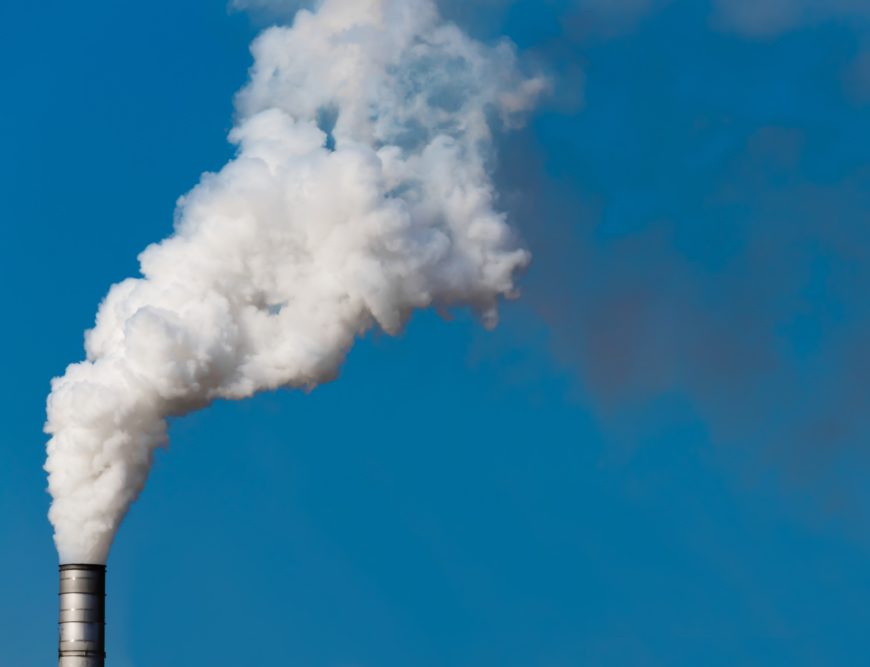
1. Make our biggest polluters pay.
Just 15 companies are responsible for 77% of New Zealand’s emissions, and many of these companies get a free pass for their pollution. This happens in one of two ways:
- Through being exempt from the Emissions Trading Scheme (ETS) – this applies to agricultural manufacturers like Fonterra and AFFCO
- Through receiving a ‘free allocation’ under the ETS – this basically means they get a government subsidy for their emissions (like New Zealand Steel and Methanex). The government doesn’t want to risk that they will jump ship overseas if they have to pay for their pollution.
When the ETS was set up, this ‘free allocation’ was meant to be gone completely by 2029. But successive government’s lack of action has meant that many will still be receiving government subsidies beyond 2050 – this is when the country is meant to reach zero carbon.
Phasing out free industrial allocation by the end of the decade, as originally intended, would go a long way to incentivising change in those big companies to reduce their emissions faster. For hard to abate sectors like steel, this should be accompanied by appropriate R&D funding and just transition plans for workers.
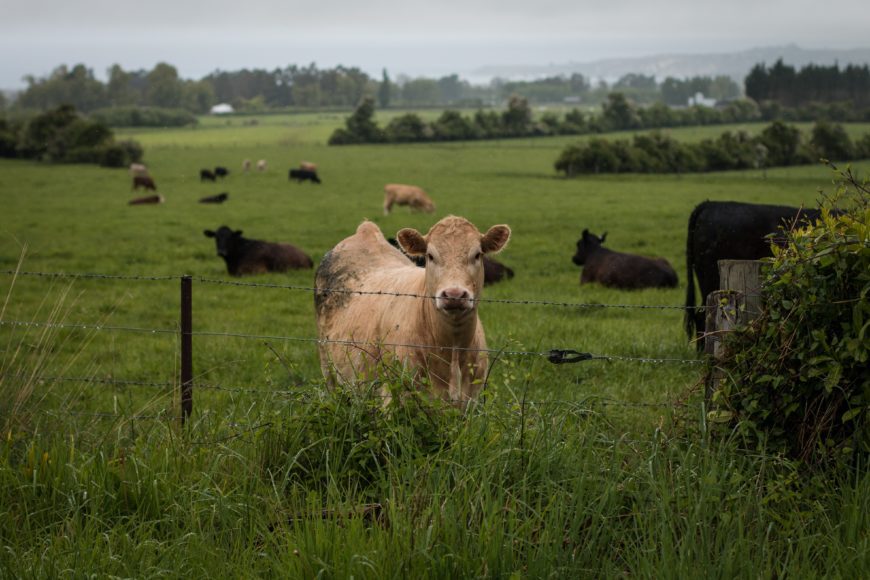
2. Do something in agriculture.
It’s the source of nearly half our emissions profile, but our government is not requiring enough of this sector to get its emissions down, with the ERP draft containing no policies to reduce emissions before 2025. At that point, a bespoke price on agricultural emissions is planned to kick in, but will receive a 95% discount from the government (yet another free allocation, as mentioned above).
This won’t create a real incentive to reduce emissions, leaving the government to project that climate pollution from farming will be reduced by just “6.5 per cent for biogenic methane and 3.1 per cent for long-lived gases by 2030, relative to 2017 levels. By contrast, Ireland, another country with similar emissions profile and pasture-based livestock farming, is aiming to reduce agricultural emissions 22-30 per cent by 2030.
Denmark has legislated to reduce agricultural emissions by 55 per cent below 1990 levels by 2030, and will pay US$593 million to incentivise farmers to adopt less emissions intensive systems of production.
Here are 3 ways the government can step up action in this sector and ensure a thriving rural sector into the future:
- Price agricultural emissions in the Emissions Trading Scheme at the processor level from 2022. This finally brings the sector into the ETS like the rest of the economy, and puts the burden on big companies like Fonterra, AFFCO, and the fertiliser companies to stimulate industry-wide change, rather than individual farmers. This could happen now – there is no need to wait. To stimulate adoption of low-emissions practices, the ‘free allocation’ described above would need to be much less than 95% (some would say 0%).
- Phase out synthetic nitrogen fertiliser by 2030. Synthetic fertiliser companies Ballance and Ravensdown are responsible for 2.7 million tonnes of emissions annually alone, but their products are also the key enabler of intensification of dairy farming. Phasing out synthetic nitrogen fertiliser can reduce emissions of nitrous oxide that fertilisers release, reduce the CO2 produced by manufacturing them, and accelerate the shift to de-intensifying farming, which will ultimately reduce methane significantly too. Many regenerative and organic farmers are already doing this. Pairing this with the support and advice for farmers to transition to producing higher value food and fibre is key to enable a just transition.
- Establish transition hubs and a $1 billion regenerative farming fund. Business leaders have called for local ‘Regeneration hubs’ or transition hubs for ‘sunrise sectors’[i]. These hubs will make sure farmers have all the information and choices available to them to shift production modes, and get funding for regenerative, organic extension services. They also call for linking these hubs to government funded ‘transition banks’ with revolving loan schemes, and other appropriate finance to de-risk the transition for farmers.[ii] Similarly, Greenpeace argues for 3-year grant funding for farmers undertaking changed practices, as part of their $1 billion regenerative farming fund proposal, to allow farmers to gain experience in them.

3. Accelerate and improve transport choices
Reduce reliance on cars now, with a more ambitious target to reduce the average distance travelled in cars by 20% by 2030, not 2035, as currently proposed. To do this, people who could use alternatives need greater transport choices, particularly in our big cities. Other countries in Europe have really accelerated this since the pandemic, adding many kilometres of cycleways and footpaths, and making enough space so that both pedestrians and cyclists feel safe. For example, Greater Auckland recommend taking a leaf out of England’s book with their cycling and walking plan. By contrast, the New Zealand government has scuppered a pedestrian and bike crossing over the harbour bridge indefinitely, and Wellington’s ‘Let’s Get Wellington Moving light rail might not be built until at least 2034; it could be as late as 2043.
Let’s get on with doing these sooner. The faster options for building these are also the most cost effective, freeing up billions of dollars for investment in other parts of our big cities’ transport needs.
Provide free public transport for community service card holders, under 25s and tertiary students. To get more people out of their cars, public transport needs to be cheap and easy to use – particularly for people with the least resources.
The government is going to trial discounted public transport in parts of Auckland from next year, giving half-price fares for Community Service Card holders. This is to run for three years then perhaps be extended nationwide, as the government proposes in the Emissions Reduction Plan discussion document. But a coalition of 40+ organisations is putting forward a bold idea to have this fully funded by central government in Budget 2022 and free fares for the groups listed beginning in 2023. Improving bus drivers’ wages and conditions is key to this too, so that we get more drivers and services can expand.
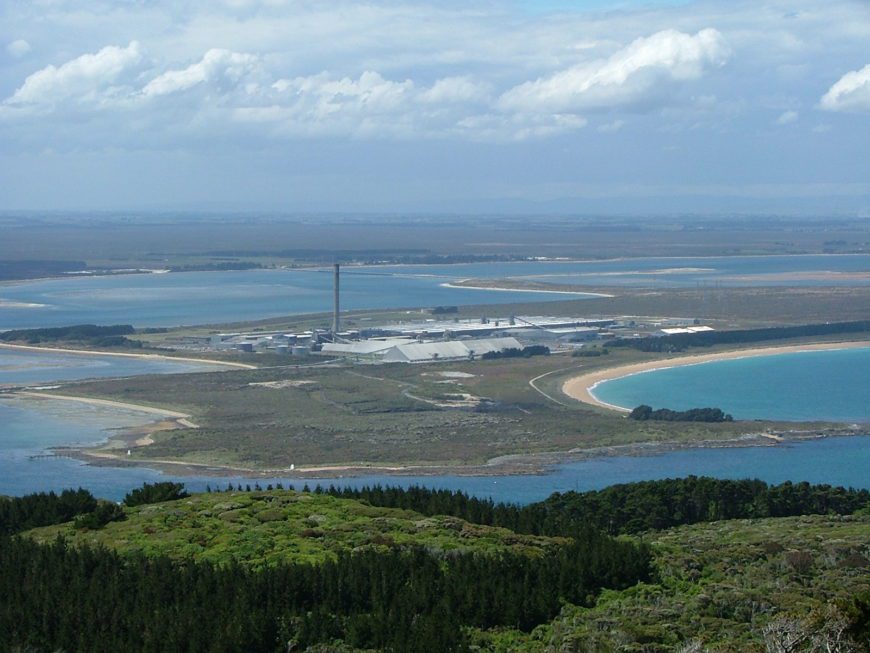
4. Free up energy – repurpose Tiwai Point for public good
Before her death last year, Jeanette Fitszimons proposed a path forward for Tiwai point Aluminium Smelter, which uses 13 per cent of the country’s electricity. Tiwai has been threatened with repeated closure by global mining giant Rio Tinto.
A big question lingering if the smelter closes, is what to do with the massive supply of renewable electricity it uses. It would take a lot of new transmission lines to bring it up to the north island where the household demand is highest, and so instead the government is in talks with Australian mining billionaire about turning it into a ‘green hydrogen’ factory, which remains mostly an experimental technology with uncertain markets.
Instead of handing over from one global mining giant that disregards indigenous rights to another, Jeanette’s proposal was for the government to take over Rio Tinto when they want to leave (currently threatening closure in 2024), and continue to run the smelter at half capacity. This will maintain a source of renewably-produced, low emissions aluminium, and many of the skilled jobs that are there, while also freeing up around 7 per cent of the country’s renewable electricity supply to help decarbonise South Island industry and public facilities.
As Jeanette put it:
“[This] would help with the transition away from coal in the South Island where milk and other food processing, schools and hospitals and various small industries are still reliant on coal. Voluntary redundancy might take care of many of the displaced workers, and we retain the skills, earnings and tax contributions of the others. We retain a (scaled down) export industry and the new company becomes part of the operation of the grid. Less transmission infrastructure needs to be built. We save all or most of the ETS carbon subsidy and stabilise our now genuinely ‘100% renewable’ electricity system.”
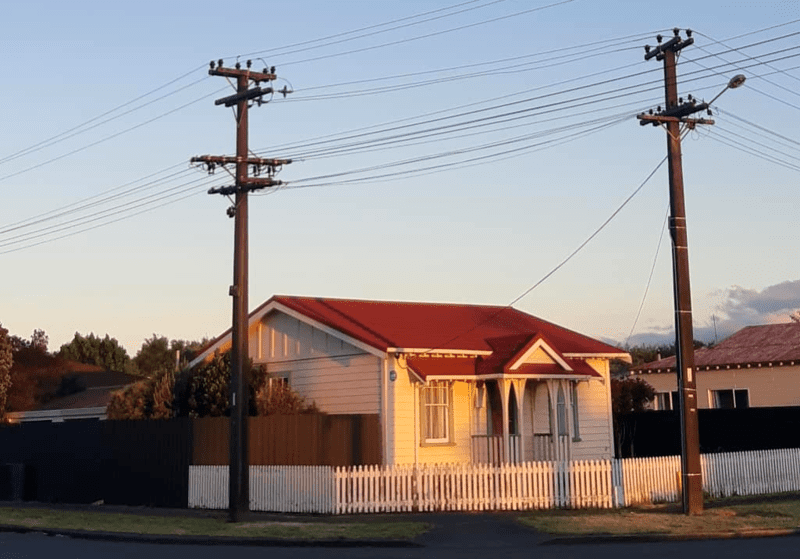
5. Make more buildings warm and efficient, powered by clean energy
Buildings are responsible for about 20 per cent of New Zealand’s carbon footprint when measuring the steel and concrete involved in constructing them, and the energy to power and heat them. For this reason, we need to make sure that the building sector is a vital part of the government’s ambition of a zero carbon Aotearoa.
Two years ago, the Green Building Council released a raft of solutions to slash emissions from the sector in a roadmap, highlighting key milestones the government should hit. These included improving the Building Code to embrace zero energy buildings, restrict fossil fuel boilers in new buildings, and energy efficiency labelling for buildings.
The Green Building Council’s recent progress assessment gave a scathing report of the government’s own Building for Climate Change Programme, basically indicating that there are promises left unfulfilled and timelines that could be brought forward to achieve much faster progress in the sector.
The most equitable way to tackle the carbon pollution of our buildings, and improve New Zealanders’ wellbeing, is to push energy efficiency into every corner of the economy, particularly to those disadvantaged communities where households spend far too big a share of their income on energy bills. A combination of deep retrofit of existing housing stock with heat pump installation can achieve modest emissions reductions, but has huge co-benefits for healthier, warmer homes, improving the accessibility of our older housing stock for disabled communities, and savings for low-income communities’ power bills.
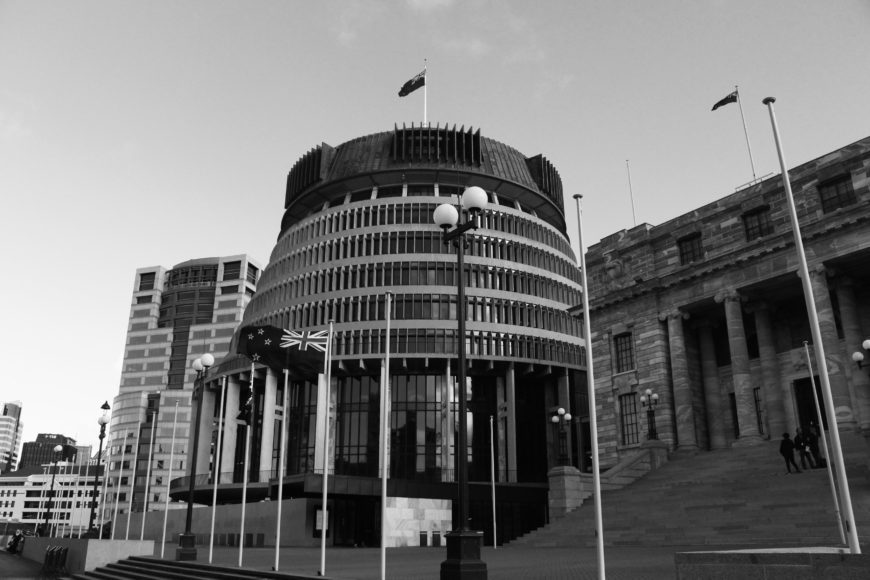
6. Give iwi and government extra levers to pull
A report commissioned by First Union is calling for the government to establish a Ministry of Green Works, along with accompanying significant funding to iwi, hapū and Māori entities in the tino rangatiratanga sphere. This is to better enable government and Māori to have the levers they need to pull to reduce emissions at the same time a tackling the housing and infrastructure crises.
The report argues that the public sector is lacking coordination, power and levers it needs in order to build anything like a Green New Deal (an ambitious approach to tackle climate change and other social goals).
“Even with our best intentions to fix our housing, infrastructure and climate problems individually, we will miss the boat if we don’t consider their interrelatedness and set firm goals that integrate core functions of all agencies – this is where a Ministry of Green Works comes in,” said First Union’s Mr Abbott.
Submit these ideas today to the government today!
To make your submission, got to the Ministry for the Environment’s quick submit form here.
Submissions on the Emissions Reduction Plan consultation document close at midnight on Wednesday 24th November.
When answering question 2, What new initiatives would you include in an emissions reduction plan for Aotearoa? You can copy and paste the following list:
I would like to see the following initiatives added into the Emissions Reduction Plan:
Emissions Pricing
- Phase out the industrial allocation under the Emissions Trading Scheme much faster than currently planned, with all free allocation gone by 2030 at the latest. Accompany this with R&D funding and just transition planning for hard to abate sectors like steel
Agriculture
- Price agricultural emissions in the Emissions Trading Scheme at the processor level from 2022, with far less than the planned 95% free allocation
- Phase out of synthetic nitrogen fertiliser by 2030
- Establish transition hubs in line with the recommendations of the Aotearoa Circle’s Fenwick Report and a $1 billion regenerative farming fund, in line with Greenpeace’s policy briefing
Transport
- Set a target to reduce VKT by 20% by 2030
- Fund pedestrian and cycling improvements at a scale similar to England’s Walking and Cycling Plan
- Bring forward the timeframes for constructing light rail in Wellington and Auckland to to have them completed within this decade. Choose the most cost-effective options to free up more funding for other public transport improvements
- Provide free public transport for community service card holders, under 25s and tertiary students in line with the calls from the Aotearoa Collective for Public Transport Equity, fully funded by central government in Budget 2022
- Bring public transport back into public ownership to improve driver pay and conditions, so that services can be easily expanded
Energy
- Takeover the running of Tiwai Point Aluminium Smelter in 2024 following Rio Tinto’s exit, running it at half capacity, and using the remaining electricity to help decarbonise food processing, schools, hospitals and small industry in the South Island, as called for by Jeanette Fitzsimons before her passing
Buildings and infrastructure
- Accelerate the Building for Climate Change Programme by fully adopting the recommendations of the Green Building Council to achieve zero carbon buildings by 2030, and a deep retrofit of existing housing stock, including requirements for improving accessibility of housing at the same time
- Establish a Ministry of Green Works along with accompanying significant funding to iwi, hapū and Māori entities in the tino rangatiratanga sphere, as recommended by First Union, to enable government and Māori to have the levers they need to pull to reduce emissions at the same time a tackling the housing and infrastructure crises





